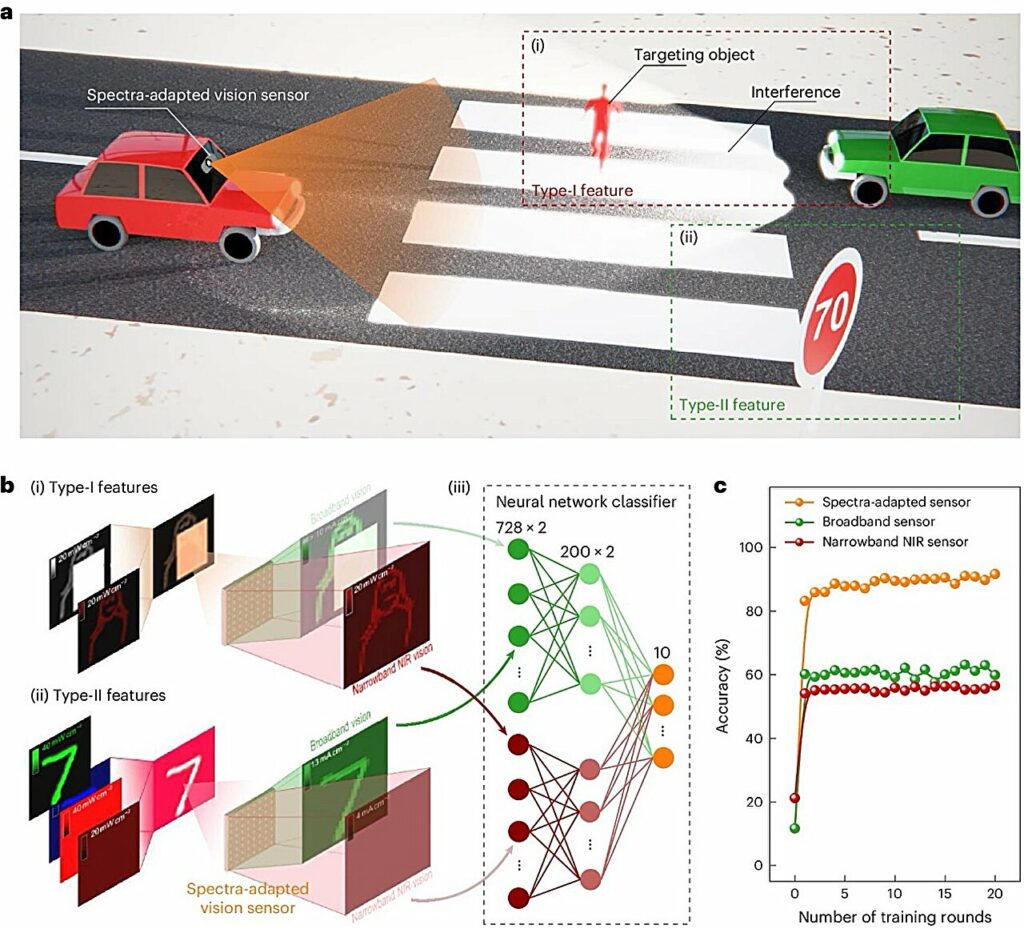Utilizing a unique array of back-to-back photodiodes, the sensor perform well in poor lighting without bulky accessories or complex algorithms, promising a leap forward in high-speed, low-power object recognition.

Researchers at the Hong Kong Polytechnic University have developed a bio-inspired vision sensor capable of detecting objects in various lighting conditions, including nighttime, shadowed locations, and foggy environments. This new sensor, introduced in Nature Electronics, can adapt to the spectral features of its environment, enhancing object detection reliability in autonomous vehicles and mobile robotic systems.
Traditional computer vision methods struggle under poor lighting. The new sensor, based on an array of back-to-back photodiodes, addresses this limitation. The researchers aimed to create a sensor that excels in recognizing objects despite strong light interference, smoke, or fog. The design focuses on minimal time latency and low power consumption without relying on bulky optical accessories or complex algorithms. The sensor utilizes back-to-back photodiodes with switchable junctions of different spectral sensitivities, controlled by an external bias voltage. The shallow junction (TiO2/Sb2Se3) is sensitive to short-wavelength light, while the deep junction (Sb2Se3/Si) is sensitive to long-wavelength light. This design allows the sensor to adjust to the broadband visible spectrum or a narrowband near-infrared spectrum.
The team mentioned that the spectral adaptation process takes tens of microseconds, comparable to the frame rate (around 100 kHz) in high-speed cameras. This adaptation improves recognition accuracy under intense visible-light glare. Initial tests showed promising results, particularly in autonomous vehicle vision systems, providing anti-glare capabilities with low latency and power consumption without needing additional optical accessories or complex algorithms. They introduce an innovative in-sensor spectral adaptation technology. The process is very fast, comparable to high-speed cameras’ frame rate.
This sensor could enhance robotic systems’ ability to recognize objects in various lighting conditions without increasing power consumption. Potential applications include autonomous vehicles, medical devices, industrial robots, and surveillance systems. Future research will focus on improving the sensor’s performance in responsivity, dynamic range, and response speed, integrating additional sensing functions, and developing a large-scale array for a mature artificial vision chip.






